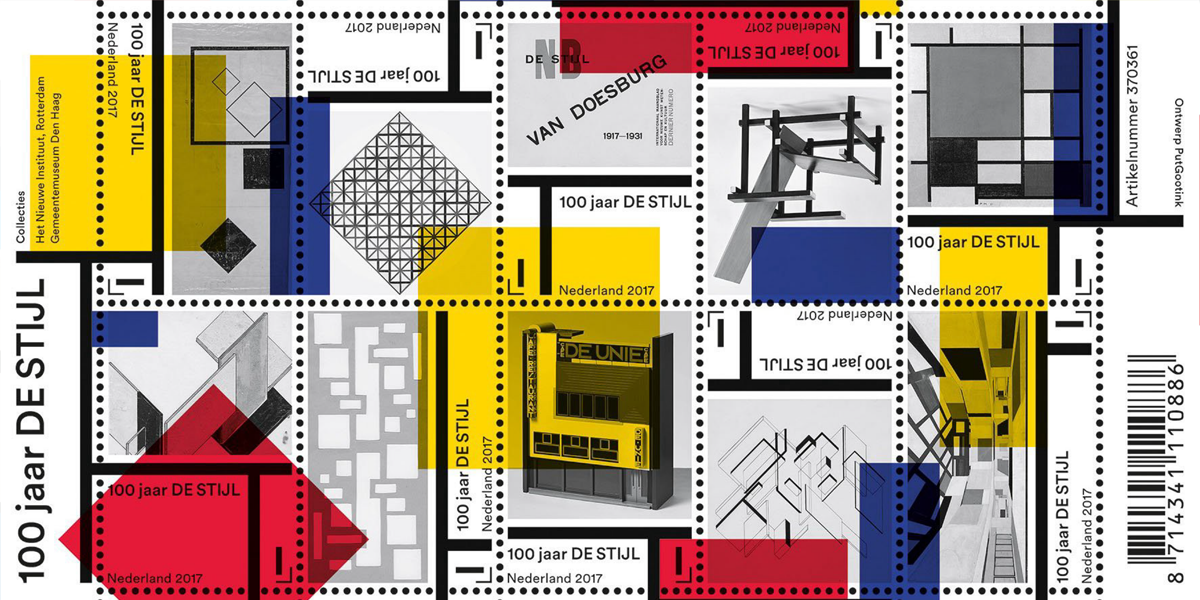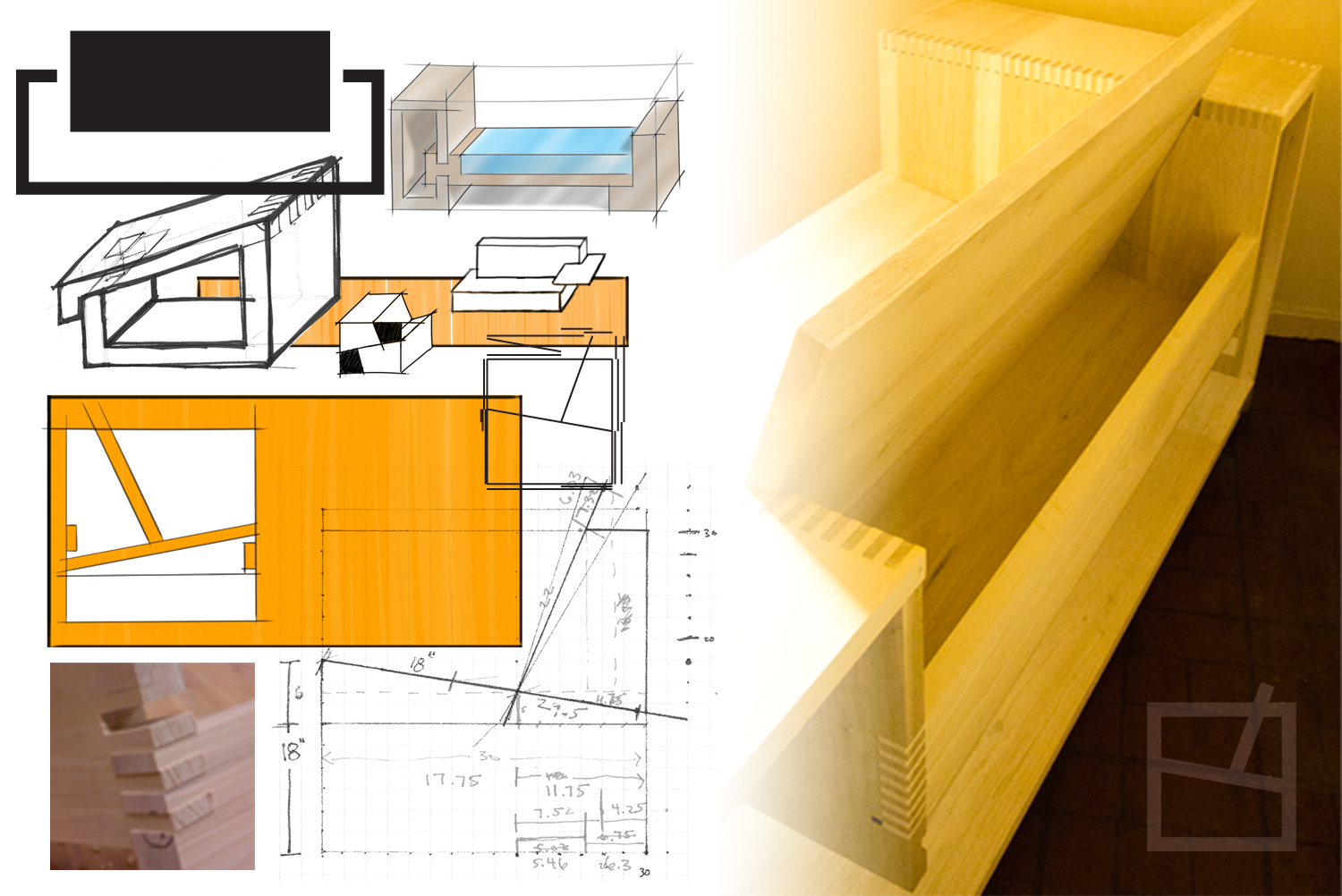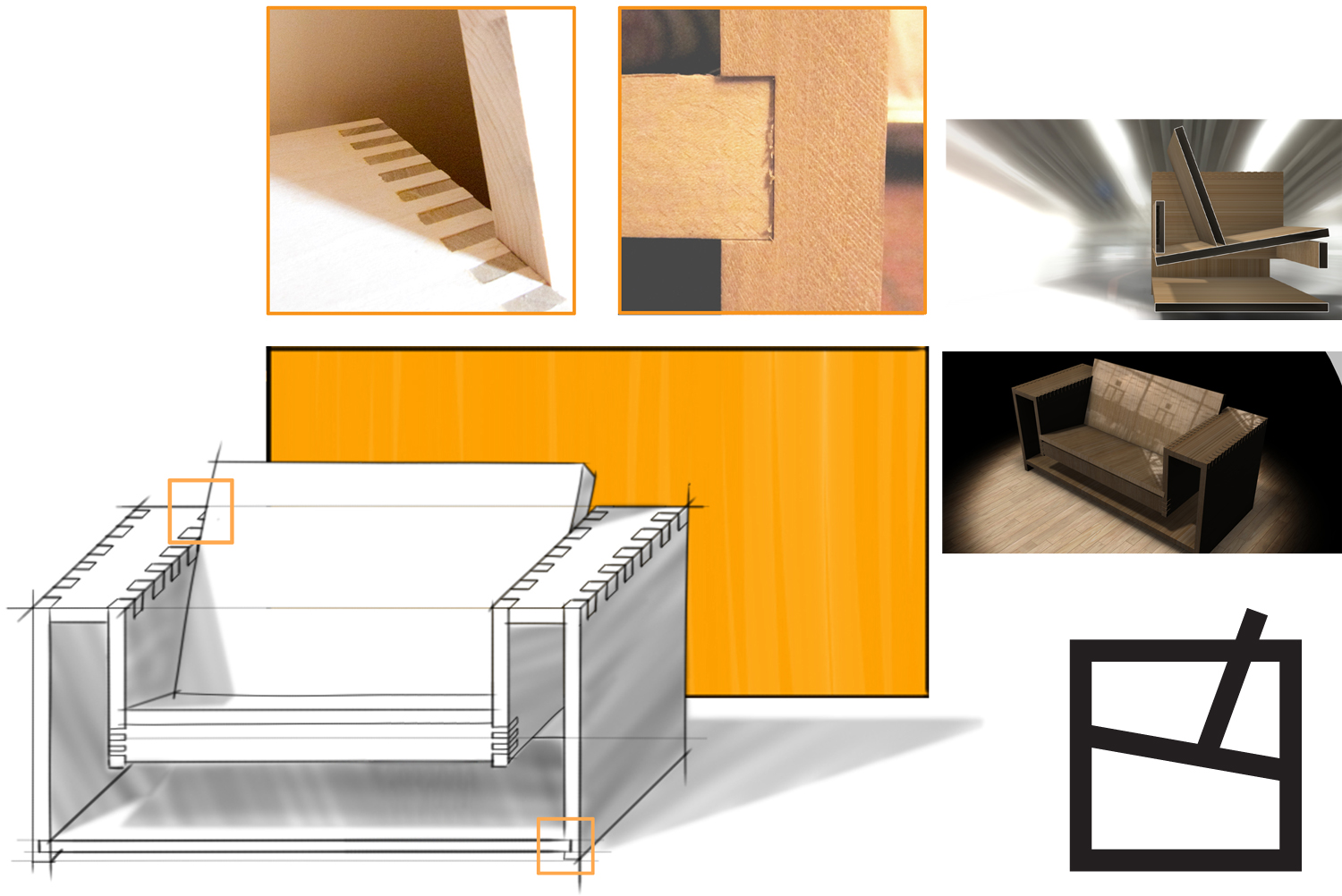While the mental pieces of the project took years to form, the bench was constructed in a week. Ideas can take time to mature and grow before they can be realized.
While on vacation at the beach one summer, I experienced my first Adirondack char and immediately fell in love with it. I wondered why their dimensions weren’t used more widely in furniture design since it was so comfortable. I wanted to recreate that comfortable, relaxed experience with something that was more suitable for indoor relaxation. Fast forward a few years into college, before I started building the bench, I had gotten very interested in the Netherlands during an interior architecture studio and while reading Brilliant Orange: The Neurotic Genius of Dutch Football by David Winner, I learned how Dutch culture during the 20th century was influencing their national football (soccer) identity and vice versa. The similarities went deep into their culture and included influencing city planning, politics, arts, and the Dutch mind set.




